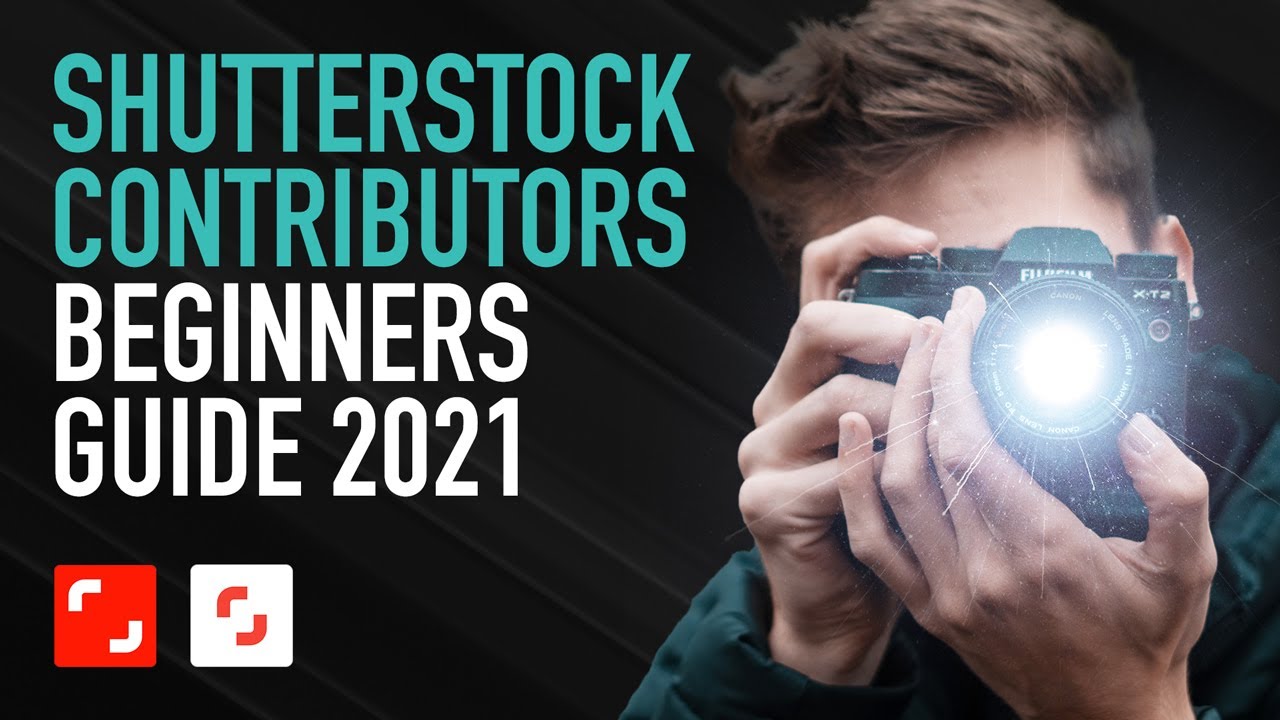Thinking about becoming a Shutterstock picture reviewer? It’s an exciting opportunity to be part of a global community that helps maintain the quality and integrity of one of the world’s leading stock photography platforms. As a reviewer, you’ll get to see a wide variety of images, provide valuable feedback, and play a crucial role in ensuring that only the best content makes it to Shutterstock‘s marketplace. If you’re passionate about photography, have a keen eye for detail, and want to earn some extra income, this program might be perfect for you. Let’s dive into what it takes to get started!
Prerequisites and Qualifications for Shutterstock Reviewers

Before applying to become a Shutterstock reviewer, it’s important to understand the key prerequisites and qualifications needed. Shutterstock looks for individuals who are not only passionate about photography and visual content but also have the right skills and experience. Here’s what you should have:
- Strong Photography Knowledge: A good understanding of image quality, composition, and technical standards. Familiarity with common file formats and resolution requirements is essential.
- Attention to Detail: The ability to spot technical errors, inappropriate content, or any issues that could affect the quality of images on the platform.
- Good Language Skills: Since reviews often involve written feedback, clear and professional communication skills are important.
- Reliable Internet Connection & Computer: You’ll need a stable setup to review images efficiently and submit feedback without interruptions.
- Experience with Stock or Commercial Photography: While not always mandatory, having a background in stock photography or commercial imagery can give you an edge. It helps you understand what clients need and what makes an image marketable.
- Availability: As a reviewer, you should have flexible availability to review submissions regularly, especially during peak times or busy periods.
Additionally, Shutterstock may look for reviewers who are unbiased, fair, and committed to upholding their community standards. If you think you meet these criteria, you’re on the right track to applying and potentially joining their reviewer team!
Step-by-Step Guide to Submit Your Application

So, you’re interested in becoming a Shutterstock picture reviewer? Great choice! It’s an exciting way to get involved in the creative community and help ensure high-quality content makes it onto the platform. Let’s walk through the process step-by-step so you can get started smoothly.
Step 1: Create a Shutterstock Contributor Account
If you haven’t already, head over to Shutterstock’s contributor portal and sign up. It’s free and straightforward. Just fill in your basic details, verify your email, and set up your profile. Make sure to use an email address you check regularly because you’ll receive important updates.
Step 2: Review the Reviewer Application Requirements
Before applying, take some time to read through Shutterstock’s guidelines for reviewers. They typically look for experienced photographers, designers, or creative professionals with a strong eye for quality. Your portfolio should showcase your best work, and you need to demonstrate an understanding of Shutterstock’s content standards.
Step 3: Prepare Your Portfolio
This is a crucial step. Gather your best images or designs that represent your skills. Make sure your work aligns with Shutterstock’s content policies and shows diversity in subject matter, style, and quality. Keep your files organized and ready for upload.
Step 4: Complete the Reviewer Application Form
Log into your contributor account and look for the “Become a Reviewer” link or section. Fill out the application form carefully. You’ll likely be asked to provide:
- Your personal details
- A brief overview of your creative background
- Links to your portfolio or uploaded samples
- Any relevant experience or certifications
Step 5: Submit Your Application
Once everything is filled out and your portfolio is uploaded, review your application to ensure all information is accurate. Then, hit the submit button. Now, it’s time to wait! Shutterstock will review your application, which can take several weeks. During this time, avoid making multiple submissions or edits to your application to keep things smooth.
Step 6: Follow Up and Be Patient
If you don’t hear back after a few weeks, it’s okay to send a polite follow-up email. Remember, the review process is thorough because they want to find the right people. Stay patient and keep improving your portfolio in the meantime!
Tips for Preparing a Strong Portfolio for Review

Having a stellar portfolio is key to impressing Shutterstock’s review team and increasing your chances of becoming a reviewer. Here are some friendly tips to help you prepare:
- Showcase Your Best Work: Only include images or designs that you’re genuinely proud of. Quality beats quantity every time. Make sure your samples are sharp, well-lit, and properly composed.
- Diversity Matters: Include a wide variety of subjects, styles, and formats. This shows your versatility as a creator and your ability to handle different content types.
- Follow Content Guidelines: Ensure your work complies with Shutterstock’s standards. Avoid images with watermarks, logos, or inappropriate content. Familiarize yourself with their submission policies.
- Pay Attention to Technical Details: Submit files in the correct formats, resolutions, and color profiles. For photos, JPEGs with minimal compression work well. For vectors or illustrations, follow their specific requirements.
- Highlight Your Unique Style: While variety is good, having a consistent style or theme can help reviewers understand your creative voice. It’s okay to have a signature look or approach.
- Organize Your Portfolio: Present your work neatly. Use folders or sections if possible, and include a brief description for each piece to explain your concept or technique.
- Stay Updated: Keep your portfolio fresh by adding new work regularly. This shows continuous growth and dedication.
Remember, your goal is to demonstrate that you’re capable of producing high-quality, compliant content consistently. Take your time to curate your best work, and don’t be discouraged if it takes a few tries to get it just right. Good luck—you’ve got this!
What to Expect During the Application and Review Process
So, you’re interested in becoming a Shutterstock picture reviewer? That’s an exciting opportunity! The process might seem a bit daunting at first, but once you understand what to expect, it can be a smooth journey. Let’s walk through the typical steps so you’re fully prepared.
First, you’ll need to submit your application through the Shutterstock Contributor portal. This usually involves providing your personal details, a sample portfolio of your work, and sometimes answering a few questions about your experience with photography and image quality. Make sure your portfolio showcases a variety of high-quality images, demonstrating good composition, lighting, and subject matter. Remember, Shutterstock looks for images that are sharp, well-exposed, and commercially viable.
After submitting your application, the review process begins. Shutterstock’s team will evaluate your portfolio to see if your images meet their quality standards. This can take anywhere from a few days to a few weeks, depending on the volume of applications they’re processing at the time. During this period, you might receive feedback or requests for additional samples, especially if some images don’t quite meet their standards.
Once your application passes the initial review, you’ll typically go through a testing phase. Here, Shutterstock assesses your ability to accurately review and categorize images. They might provide you with a set of sample images and ask you to rate, tag, or select images that meet certain criteria. This step is crucial because it ensures that reviewers can consistently uphold Shutterstock’s quality standards.
Finally, if everything goes well, you’ll receive notification that you’ve been approved to become a reviewer. From there, you’ll gain access to the review platform where you’ll start evaluating submitted images. Keep in mind that the onboarding process might include training materials or guidelines to help you understand the specific standards Shutterstock expects for images and keywords.
In summary, the application process involves:
- Submitting your portfolio and profile details
- Waiting for the initial review (a few days to weeks)
- Completing a testing or calibration phase
- Receiving approval and gaining access to review tools
Patience is key here. Make sure your portfolio is polished and representative of your best work to increase your chances of success. And don’t worry—if you’re passionate about photography and quality standards, you’ll do great!
Benefits of Becoming a Shutterstock Picture Reviewer
Thinking about becoming a Shutterstock picture reviewer? It’s not just about helping Shutterstock maintain quality; there are some pretty fantastic benefits too! Let’s explore what makes this role so rewarding.
1. Flexibility and Control Over Your Schedule
One of the most loved perks is the ability to work on your own time. As a reviewer, you can choose when and how much you want to review. Whether you’re looking for a side gig or a more steady part-time role, this flexibility makes it easy to fit into your life.
2. Sharpen Your Photography and Editing Skills
Reviewing images regularly keeps you sharp and attentive to detail. You’ll develop a keen eye for high-quality visuals, composition, lighting, and keywording—all of which can improve your own photography skills. Plus, understanding what makes an image successful on a platform like Shutterstock is a valuable insight.
3. Contribute to a Creative Community
Being a reviewer means you’re part of a global community of photographers and visual artists. Your assessments help support creators worldwide by ensuring their work is accurately represented and easily discoverable. It’s a rewarding feeling to know you’re helping maintain a high standard for visual content.
4. Earn Extra Income
While reviewing images isn’t usually a full-time gig, it can be a good source of supplementary income. Shutterstock often offers competitive review incentives, and some reviewers find that it adds up over time, especially if they’re dedicated and review frequently.
5. Enhance Your Professional Profile
This role can also bolster your resume, especially if you’re pursuing careers in photography, digital marketing, or content creation. It shows that you understand industry standards and are trusted to evaluate visual content critically.
| Benefit | Description |
|---|---|
| Flexibility | Work on your own schedule, choosing when and how much to review. |
| Skill Development | Improve your eye for quality and learn industry standards firsthand. |
| Community Impact | Help creators get their work published and seen worldwide. |
| Additional Income | Earn extra money in your spare time with flexible review tasks. |
| Professional Growth | Boost your portfolio and credibility in the creative industry. |
All in all, becoming a Shutterstock picture reviewer is more than just a job—it’s a chance to stay engaged with the photography community, hone your skills, and earn some extra income. If you’re passionate about visual quality and enjoy evaluating images, this role could be a perfect fit for you!
Common Challenges and How to Overcome Them
Becoming a Shutterstock picture reviewer is an exciting opportunity, but it’s not without its hurdles. Many new reviewers encounter similar challenges along the way. The good news is, with a little guidance and preparation, you can navigate these obstacles smoothly and set yourself up for success.
One of the most common challenges is maintaining a consistent and high standard in your reviews. Shutterstock has specific guidelines about what qualifies as acceptable content, and it can sometimes be tricky to interpret these rules, especially for nuanced cases. To overcome this, it’s helpful to thoroughly familiarize yourself with Shutterstock’s content guidelines. Regularly reviewing their policies and examples can sharpen your judgment and reduce uncertainty.
Another hurdle is managing your workload and staying organized. Reviewing images requires focus and attention to detail, and it’s easy to feel overwhelmed if you take on too many images at once. To avoid burnout, consider setting a manageable daily or weekly quota. Use tools like checklists or spreadsheets to track your reviews and ensure consistency.
Technical issues can also pop up—whether it’s slow internet, problems with the review platform, or software glitches. Keep your devices updated and have a backup plan, like a secondary device or alternative internet source, ready. If you encounter persistent tech problems, don’t hesitate to reach out to Shutterstock’s support team for assistance.
Lastly, dealing with rejection or criticism can be tough, especially when your reviews are challenged. Remember, reviewing is a skill that improves over time. Take feedback constructively, review the guidelines if your review is questioned, and learn from each experience. Joining forums or online communities of Shutterstock reviewers can also provide valuable support and insights.
Overall, facing challenges head-on with a proactive mindset, continuous learning, and good organization will help you become a confident and effective Shutterstock picture reviewer.
Conclusion and Additional Resources
Embarking on your journey to become a Shutterstock picture reviewer can be both rewarding and educational. It’s a fantastic way to stay connected with the creative community, hone your visual judgment, and earn some extra income. Remember, the process involves learning the platform’s guidelines, being patient with yourself, and consistently improving your skills.
If you’re serious about starting, here are a few additional resources that can help you along the way:
- Shutterstock Contributor Portal — Your gateway to submitting content and applying for reviewer roles.
- Shutterstock Blog — Offers updates, tips, and success stories from contributors and reviewers.
- Shutterstock Contributor Forums — Connect with other contributors and reviewers, ask questions, and share experiences.
- Guidelines and Policies — Always review the latest content guidelines to stay compliant.
Remember, patience and persistence are key. Every expert reviewer started exactly where you are now. Keep learning, stay organized, and don’t be afraid to ask for help when needed. Good luck on your journey to becoming a trusted Shutterstock picture reviewer!

